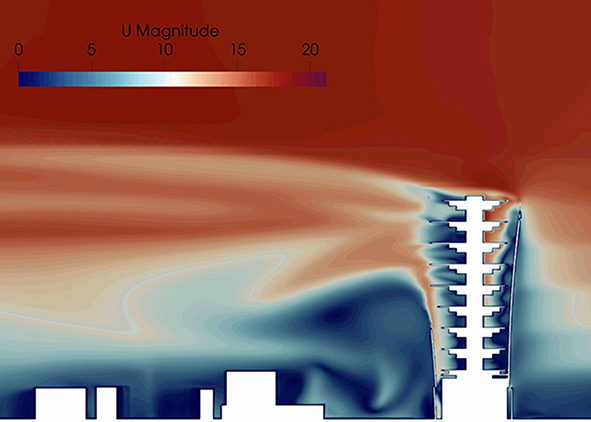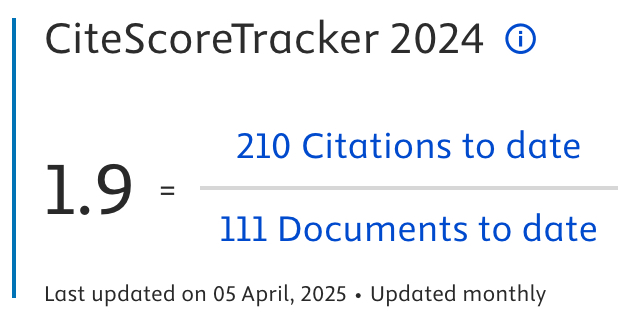Intelligenze Computazionali nel Progetto post-Ambientale. Esempi da MAILAB
DOI:
https://doi.org/10.19229/2464-9309/542019Parole chiave:
co-evoluzionismo, ecologia, progettazione ambientale, progettazione parametrica, progettazione generativaAbstract
L’articolo affronta la questione ambientale criticando la visione antropocentrica, ancora viva nel dibattito e nel progetto, come permanenza del soggiacente dualismo umanità/ambiente. A essa oppone le tesi co-evoluzioniste e del Nuovo Realismo rielaborate alla luce di un nuovo metalinguaggio (Matema digitale) capace di ‘dar voce’ alla moltitudine d’agenti e di attivare forme d’intelligenza collaborativa (Intelligenze Computazionali) abilitanti esplorazioni progettuali oltre la norma e il già noto. Segue la descrizione dei suoi dispositivi nelle forme del Parametric e Generative Design e le esperienze del laboratorio di ricerca Mailab. La conclusione è un invito a riflettere sugli effetti collaterali che potrebbero scaturire dalla marcatura digitale e da un’eccessiva enfasi sul ‘saper fare’.
Downloads
##plugins.generic.articleMetricsGraph.articlePageHeading##
Riferimenti bibliografici
Agamben, G. (1995), Homo sacer, Einaudi, Torino.
Alexander, C. (1967), Note sulla sintesi della forma [or. ed. Notes on the Synthesis of Form, 1964], Il Saggiatore, Milano.
Andia, A. and Spiegelhalter, T. (2015), Post-Parametric Automation in Design and Construction, Artech House, Boston.
Asimow, M. (1968), Principi di progettazione [orig. ed. Introduction to Design, 1962], Marsilio, Venezia.
Bansal, J. C., Singh, P. K. and Pal, N. R. (eds) (2019), Evolutionary and Swarm Intelligence Algorithms, Springer, Cham.
Bottazzi, R. (2018), Digital architecture beyond computers – fragments of a cultural history of computational design, Bloomsbury Publishing Plc, London.
Capra, F. (1988; I ed. 1982) The turning Point – Science society and the rising culture, Bantam Book, Toronto.
Carson, R. (1994; I ed. 1962), Silent Spring, Houghton Mifflin Company, Boston (MA).
Christian, D. (2004), Maps of Time – An Introduction to Big History, University of California Press, Los Angeles.
Cichocka, J. M., Migalska, A., Browne, W. N. and Rodriguez, E. (2017), “The Implementation of Particle Swarm Optimization Algorithm in a Design Optimization Tool”, in Çağdaş, G., Özkar, M., Gül, L. F. and Gürer, E. (eds) (2017), Computer-Aided Architectural Design – Future Trajectories, Springer, Cham.
Crowley, J. E. (2001), The invention of comfort – Sensibilities & design in early Modern Britain & Early America, The John Hopkins University Press, Baltimore-London.
Dawkins, R. (2006; I ed. 1976), The self fish gene, Oxford University Press, Oxford.
Dawkins, R. (1996; I ed. 1986), The Blind Watchmaker, W. W. Norton & Company, New York.
Deleuze, G. and Guattari, F. (2005), A thousand plateaus – capitalism and schizophrenia [orig. ed. Mille Plateaux, 1980], University of Minnesota Press, Minneapolis-London.
Deutsch, R. (2015), Data-driven design and construction – 25 strategies for capturing, analyzing and applying building data, Wiley & Sons, Hoboken, New Jersey.
Fitch, J. M. (1947), American Building – The Forces that Shape it, The Riverside Press, Cambridge.
Foucault, M. (1988), Le parole e le cose [orig. ed. Les mots et les choses, 1966], Rizzoli, Milano.
Frazer, J. (1995), An Evolutionary Architecture, Architectural Association Press, London.
Harman, J. (2011), The Quadruple Object, Zero Books, Alfresford.
Johnston, W. A. (2005), “Third Nature: The Co-Evolution of Human Behaviour, Culture, and Technology”, in Nonlinear Dynamics, Psychology, and Life Sciences, vol. 9, n. 3. [Online] Available at: psych.utah.edu/_documents/psych4130/Third_Nature.pdf [Accessed: March 2018].
Kennedy, J., Eberhart, R. C. and Shi, Y. (2001), Swarm Intelligence, Morgan Kaufmann Publishers, San Francisco.
Kilian, A. and Ochsendorf, J. (2005), “Particle-spring systems for structural form finding”, in Journal of the International Association for Shell and Spatial Structures, vol. 46, n. 148, pp. 77-84. [Online] Available at: designexplorer.net/newscreens/cadenarytool/KilianOchsendorfIASS.pdf [Accessed: May 2017].
Latour, B. (2017), Facing Gaia. Eight Lectures on the New Climatic Regime [orig. ed. Face à Gaïa. Huit conférences sur le nouveau régime climatique, 2015], Polity Press, Cambridge (UK) - Medford (MA).
Lovelock, J. (2000; I ed. 1979), Gaia – A new look at the life on Earth, Oxford University Press, Oxford.
Liu, C., Yang, J., Kohli, P. and Furukawa, Y. (2017), “Raster-to-Vector: Revisiting Floorplan Transformation”, in International Conference on Computer Vision. [Online] Available at: art-programmer.github.io/floorplan-transformation/paper.pdf [Accessed: January 2018].
Lynn, G. (2004), “Introduction”, in Aa. Vv., Folding in Architecture, Wiley-Academy, Chirchester.
Lynn, G. (1999), “Animate Form”, in Lynn, G. (ed.), Animate Form, Princeton Architectural Press, New York (NY).
Lynn, G. (1998), Folds, Bodies & Blobs – Collected Essays, La Lettre Volée, Bruxelles.
Margulis, L. and Sagan, D. (1997; I ed. 1987), Microcosmos, University of California, Berkeley and Los Angeles Press, Berkeley-Los Angeles-London.
Maslow, A. H. (1992), Motivazione e personalità [or. ed. Motivation and Personality, 1954], Armando Editore, Roma.
Maturana, H. R. and Varela, F. G. (1980), “Autopiesis: the Organization of the Living”, in Maturana, H. R., and Varela, F. G. (eds), Autopiesis and Cognition [orig. ed. De máquinas y seres vivos, 1972], Reidel, Dordrecht, pp. 63-134.
Meadows, D. et alii (1972), The Limits to Growth, Universe Book, New York (NY).
Morton, T. (2018), Being Ecological, Pelican Book, London.
Mumford, L. (1952), Art and Technics, Columbia University Press, New York (NY).
Negroponte, N. (1975; I ed. 1970), Soft Architecture Machines, The MIT Press, Cambridge-London.
Naess, A. (1989), Ecology, community and lifestyle [or. ed. Økologi, samfunn, og livsstil, 1976], Cambridge University Press, Cambridge (UK).
Ridolfi, G. (2018), “Bim e simulazione ambientale nelle fasi iniziali del progetto”, in Ceccherini Nelli, L. (ed.), Soluzioni innovative di risparmio energetico per edifici Nearly Zero Energy, Didapress, Firenze.
Ridolfi, G. and Saberi, A. (2016), “Learning Design Through Designerly Thinking: Holistic Digital Modeling in a graduate program in Architecture”, in Słyk, J. and Bezerra, L. (eds.), Education for research – Research for Creativity, Wydziaf Architektur Politechniki Warszawskeiej, Warszawa.
Ridolfi, G., Saberi, A. and Bakhshaei, O. (2019), “High | Bombastic – Adaptive skin conceptual prototype for Mediterranean climate”, in Sayigh, A. (ed.), Sustainable Building for a Cleaner Environment. Springer, Cham.
Schumacher, P. (ed.) (2016), “Parametricism 2.0: Rethinking Architecture’s Agenda for the 21st Century”, in Architectural Design, vol. 86, pp. 18-23.
Schumacher, P. (2009), “Parametricism: A New Global Style for Architecture and Urban Design”, in Architectural Design, vol. 79, issue 4, pp. 14-23.
Schumacher, P. (2008), Parametricism as Style. Parametricist Manifesto. [Online] Available at: www.digitalmanifesto.net/manifestos/76/ [Accessed: July 2015].
Serres, M. (2011), Betrayal – The Thanatocracy [or. ed. “Trahison: la thanatocratie”, in Serres, M. (ed.), Hermès III: La traduction, 1974], Édition de Minuit, Paris. [Online] Available at: issuu.com/randisi/docs/serres__betrayal [Accessed: March 2016].
Serres, M. (2006), Revisiting the Natural Contract, talk at Simon Fraser University on May 4. [Online] Available at: www.sfu.ca/humanities-institute-old/pdf/Naturalcontract.pdf [Accessed: March 2016].
Serres, M. (1998), The Natural Contract [orig. ed. Le contract Naturel, 1990], The University of Michigan Press, Ann Arbor (MI).
Vagnetti, L. (1973), L’architetto nella storia di Occidente, Teorema Edizioni, Firenze.
Wiener, N. (1966), Introduzione alla cibernetica [orig. ed. The human use of human beings. Cybernetics and Society, 1950], Bollati Boringhieri, Torino, pp. 203-204.
Woodbury, R. (2010), Elements of parametric design, Routledge, Abingdon.

##submission.downloads##
Pubblicato
Come citare
Fascicolo
Sezione
Licenza
AGATHÓN è pubblicata sotto la licenza Creative Commons Attribution License 4.0 (CC-BY).
License scheme | Legal code
Questa licenza consente a chiunque di:
Condividere: riprodurre, distribuire, comunicare al pubblico, esporre in pubblico, rappresentare, eseguire e recitare questo materiale con qualsiasi mezzo e formato.
Modificare: remixare, trasformare il materiale e basarti su di esso per le tue opere per qualsiasi fine, anche commerciale.
Alle seguenti condizioni
Attribuzione: si deve riconoscere una menzione di paternità adeguata, fornire un link alla licenza e indicare se sono state effettuate delle modifiche; si può fare ciò in qualsiasi maniera ragionevole possibile, ma non con modalità tali da suggerire che il licenziante avalli l'utilizzatore o l'utilizzo del suo materiale.
Divieto di restrizioni aggiuntive: non si possono applicare termini legali o misure tecnologiche che impongano ad altri soggetti dei vincoli giuridici su quanto la licenza consente di fare.
Note
Non si è tenuti a rispettare i termini della licenza per quelle componenti del materiale che siano in pubblico dominio o nei casi in cui il nuovo utilizzo sia consentito da una eccezione o limitazione prevista dalla legge.
Non sono fornite garanzie. La licenza può non conferire tutte le autorizzazioni necessarie per l'utilizzo che ci si prefigge. Ad esempio, diritti di terzi come i diritti all'immagine, alla riservatezza e i diritti morali potrebbero restringere gli usi del materiale.


















































































